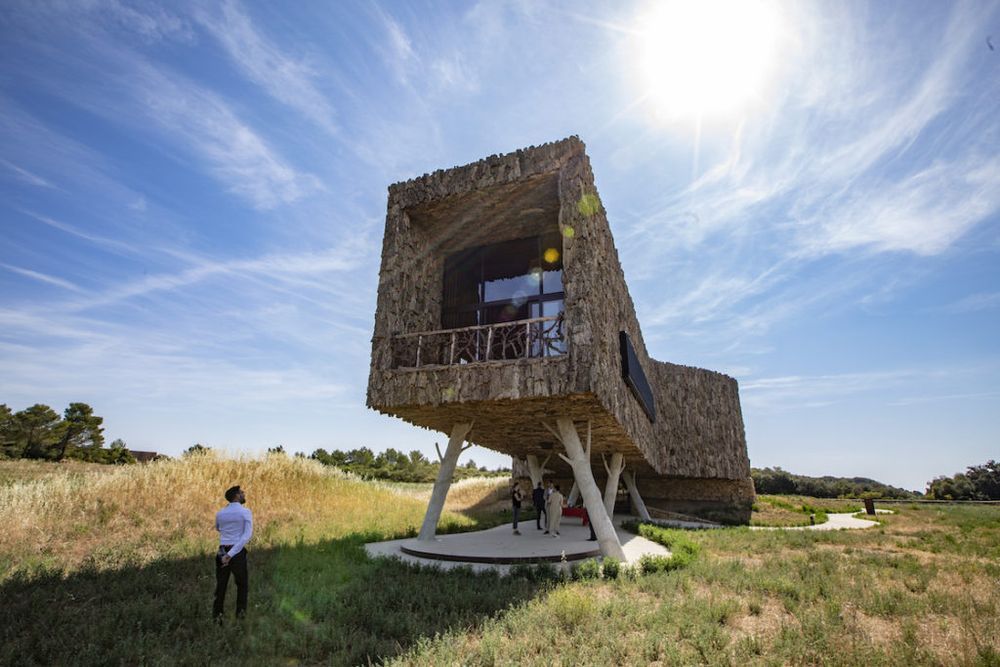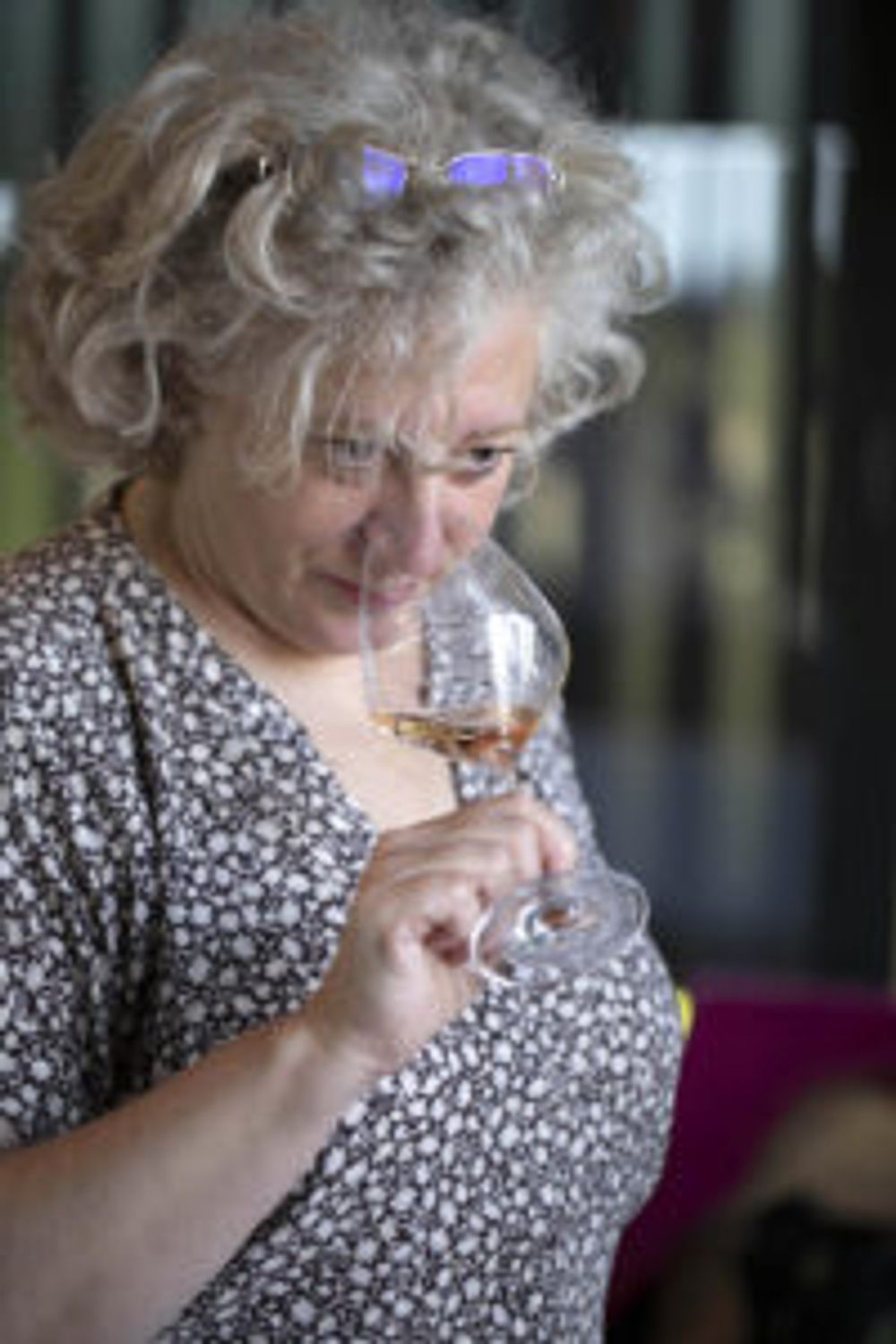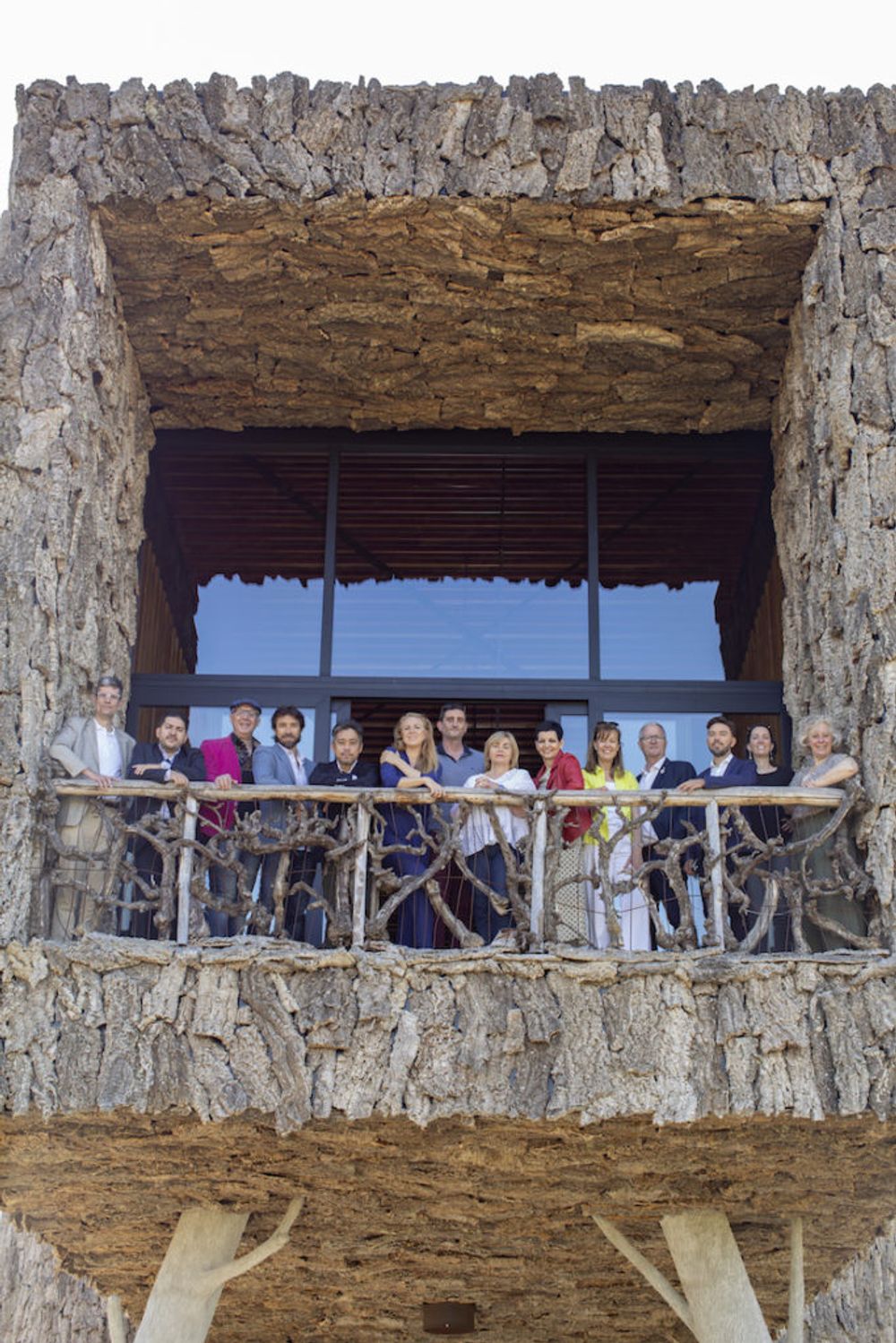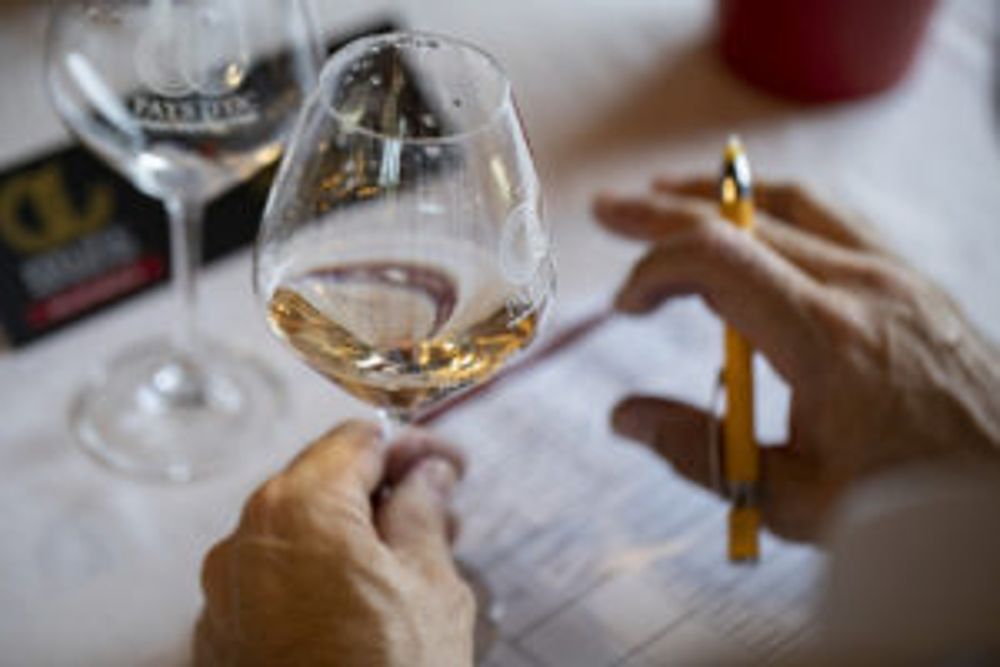Gabay looks at the 2019 Collection through the lenses of: Traditional varieties from the past; Experimenting with classic varieties – including Cabernet Sauvignon and Franc, Sauvignon, Pinot Noir, Chardonnay, Syrah and Viognier; And how a cultural history of diversity was born.
The Languedoc-Roussillon has for long been a cultural crossroads. Mediterranean and maritime trade and roads, such as the via Domitia, along the coastal plain linking Italy to Spain, up to the Atlantic coast and reaching northwards, have ensured a dynamic exchange of ideas, people and grape varieties. The range of Pays d’Oc IGP wines chosen for 2019’s Collection reflects this history and, with a strong emphasis in the Pays d’Oc for developing disease-resistant varieties, future Collections will no doubt include some even more unique wines.

Unique wines require an unique tasting room: the cork-clad cellars at Château Castigno
Traditional varieties from the past, often show undiscovered charm: for example Domaine des Maels ‘Les Matelles’ oaked Roussanne, Domaine Paul Mas ‘Grenache de Grenache’ blending Grenache Blanc and Gris and Domaine Gayda’s Figure Libre Freestyle Blanc which blends Grenache Blanc, Maccabeu, Marsanne and Roussanne. Laurent Miquel’s Solas Albariño, grown on limestone slopes in the foothills of the Pyrennees, can maybe claim a link to Galician origins via the pilgrim route to Santiago di Compostela. His Solas Grenache Blanc also has balanced weight and electric citrus acidity. Domaine d’Aigues Belles’ Premier Rolle, aka Vermentino, has oaky weight and lemony richness, a great match with garlicky gambas.
Amongst the reds, a combination of fruit and savoury notes are typical: Olivier Coste’s Cinsault; Domaine Picaro’s ‘Eclosion’ Carignan and Les Jamelles’ Sélection Parcellaire Grenache Noir show versatility for most occasions.
The nineteenth century brought agricultural wealth, canals and railways, but phylloxera and two world wars reversed prosperity, resulting in an era of financial crisis, the rise in cooperatives and relegation to being a southern backwater. The creation of appellations was slow, and the region regarded as a provider of bulk wine. Alicante Bouschet, one of the much-maligned workhorse varieties planted at this time, a teinturier grape with black juice, and thick skins, makes a bold wine (finding success in Prohibition California for fortified sacramental wine). Olivier Coste has shown the variety’s potential, with the appropriately named Alicante Badass, full of ripe red fruit, with notes of spice and mocha on the finish.

Judging for the 2019 Collection
Experimenting in the region with classic varieties
From the 1970s on, low land prices encouraged imaginative producers to come to the region and experiment, drawing on the diverse heritage of the region and inspired by Bordeaux, Burgundy and the Rhône creating wines which have taken on their own Occitanian character.
Bordeaux-influenced reds offer ripe full-bodied wines perfect for winter roasts and evenings by the fire. Domaine Gayda’s Figure Libre Cabernet Franc shows beautiful ripe fruit with vibrant, leafy-green acidity and firm, mineral tannins. Bruno Andreu’s Pure Petit Verdot has ripe blue and black fruit lifted by floral notes and black velvet tannins. A range of Cabernets in the Collection shows diversity. Fortant’s Terroir d’Altitude, Domaine de la Jasse Tête de Cuvée and Domaine Paul Mas all have rich cassis fruit with tobacco and spice. Calmel & Joseph’s Villa Blanche Malbec is powerful and voluptuous. Maison Ventenac’s Pierre is a blend of Cabernet Sauvignon and Cabernet Franc betrays its north west Languedoc origin with a fresh crunchy acidity behind its full ripe blackcurrant fruit.

Elizabeth Gabay MW
Fresh Sauvignon whites shine: Les Domaines Auriol’s ‘Renaissance de Ciceron’, Les Vignobles Foncalieu’s Le Versant and Serre de Guèry’s ‘Sagesse’ . Foncalieu’s Griset made from the rare Sauvignon Gris, has less of the grassy freshness of its cousin, and more citrus grapefruit vivacity.
Pinot Noir, especially in slightly cooler sites, also does well. Domaine Girard’s Pech Calvel Pinot Noir, open tank fermented and aged in barrel, is a serious wine with ripe cherry fruit and silky tannins.
A range of Chardonnays show the versatility of the variety: Maison Castel’s Grande Reserve (lush and tropical fruit); Domaine Py (clean citrus fruit); Les Vignerons de Florensac (full-bodied opulence); Les Vignerons du Sommiérois (floral peachy fruit) and the classy ‘L’Art des Sens Chardonnay Réserve’ from Laroche, partially oaked with greater weight combined with fresh restrained citrus acidity from limestone soils resulting in a charmingly elegant Chardonnay.
Domaine de Castelnau’s ‘Etendoir des Fées’ is a full-bodied and elegant Syrah, Foncalieu’s le Versant and Fortant’s Terroir d’Altitude Syrah have southern ripe fruit with notes of juniper, garrigue, spice and liquorice.
Pays d’Oc Viognier goes from strength to strength, as experience and age of vines develop. Domaine les Yeuses Viognier (hallmark floral character with rich flavours of lemon peel, tropical and dried apricot fruit), Domaine les Salices’s oaked Viognier, (more restrained, less fruity, with exotic floral notes) and Les Vignerons du Sommiérois ‘L’Infidèle’, a blend of Muscat and Viognier, is dry with full-on tropical and candied fruit and floral notes, a pretty alternative for aperitifs.

The judges at Château Castigno
While some pushed for focused appellations, another, totally different vision was developing. In the late 1970s, Jacques Gravegeal and Robert Skalli realised that Languedoc had much in common with the New World. The idea for an umbrella label, Pays d’Oc IGP, with many different varieties, a varied climate, lack of traditional restraints and a cultural history of diversity was born. Outsider varieties, such as Serre de Guéry’s ‘Conseil’ Gewürztraminer and Cantalric’s ‘Sentier du Sud Colombard’; also New World style blends, crossing the borders of classic appellations include Domaine de Cigalus’s (Chardonnay, Viognier and Sauvignon Blanc), Domaine Grand-Chemin’s ‘Anthus’ (Viognier, Chardonnay, Sauvignon Blanc and Rolle) and Les Accord Roche Mazet’s (Chardonnay and Viognier) show true liberty of expression.
Looking to the future, bringing in new varieties to cope with climate change and disease, is one of the strengths of the Pays d’Oc IGP label; Marselan, a 1961 cross of Cabernet Sauvignon and Grenache, is valued for drought resistance and concentrated fruit. Rarely bottled as a varietal, it appears in blends such as Domaine les Yeuses ‘Ô d’Yeuse’, with Cabernet Franc. Nielluccio (Corsican Sangiovese) is the latest addition, being able to retain fresh acidity in hot summers.

Today, under the label Pays d’Oc IGP, the multitude of varieties is the DNA of the label, with the possibility of so many flavours from different soils and climates giving producers complete freedom of expression and, as the judges of the Collection noted, the wines offer exceptional diversity.









































